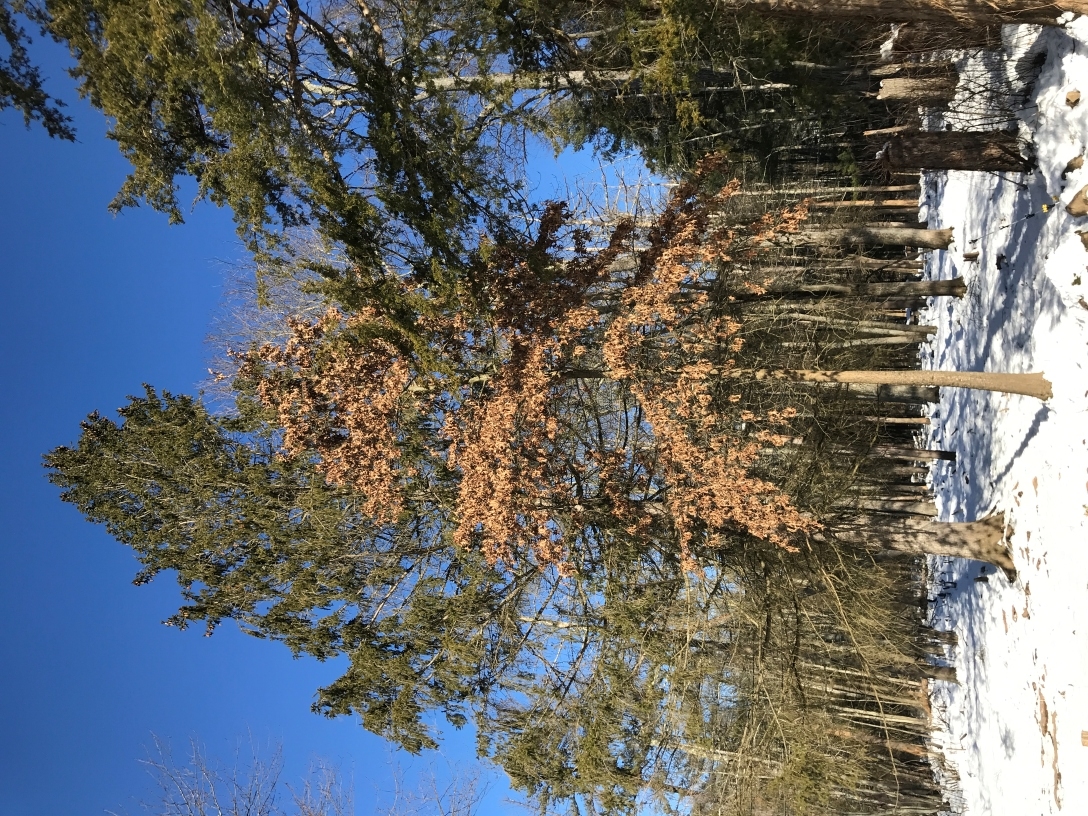Marcescence (and a blanket of snow)
February 16, 2024
There are few things on this planet as peaceful as walking in a New England forest after a snow storm. The sound deadening blanket covering the earth creates a blissful silence and is the perfect tonic for an overly noisy world. The welcomed hush is broken only by the gentle rustle of leaves stubbornly clinging to a few outlying trees.
Most deciduous trees drop their leaves as soon as the color fades in Autumn. But a few, like white oak and beech trees, are “marcescent” and hold on to their dead leaves through the winter. Researchers have yet to agree on why these trees do this. Some theorize that marcescent leaves provide a fresh layer of mulch in the spring when the trees need it most. Some think the retained leaves offer shelter for birds, which in turn fertilize the ground below them. Some think the unappetizingly dead leaves help protect the tasty new buds from being eaten by browsing herbivores. I’ve often thought that the leaves were just left there for me to enjoy, like muted wind chimes on a wintry day.
Curiously though, and perhaps revealingly so, is that the majority of marcescent leaves are within twenty feet of the ground. A white oak tree which might be eighty feet tall, will only retain the leaves on its lower branches. If the purpose of marcescence is to provide a layer of mulch, or shelter for the birds, surely retaining the upper leaves would be useful as well.
The fact that the only leaves retained are ones within reach of passing herbivores lends credence to the theory that it’s a form of protection from grazing. To discourage our contemporary white-tailed deer, the twenty-foot cut off point is definitely overkill, but oak and beech trees evolved for millions of years in the company of giant sloths and mastodons. In fact, back when beavers were the size of bears (about 10,000 years ago), your average run of the mill herbivore could easily have grazed from the gutters of a two-story home.
The only things that kept those super-sized grazers from consuming the entire planet, were the equally impressive hypercarnivores that hunted them. Despite today’s allure, I seriously doubt I’d find my meandering wintertime stroll so relaxing if I had to share the forest with yesteryear’s saber tooth tigers, American cheetahs, and dire wolves. Perhaps the true purpose of the marcescent leaves is to serve as a reminder that though the modern world might seem loud and at times stressful, at least I can aspire to be something more than just an appetizer in the food chain of life.

